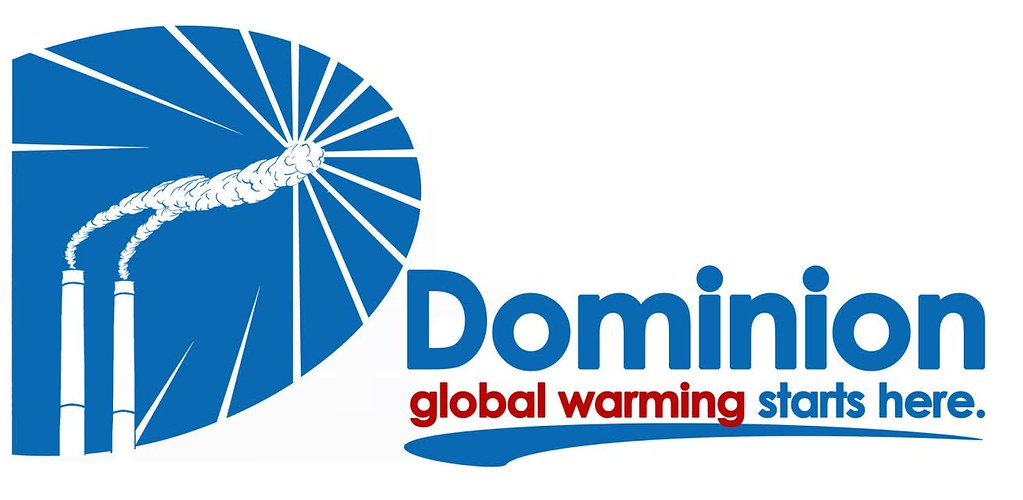 I received an email earlier today from the Chesapeake Climate Action Network, commenting on a report that Dominion Virginia Power “is considering building 220 megawatts of solar energy in Virginia over five years starting in 2017.” According to CCAN, “If pursued, this welcome announcement would likely represent a change in course from Dominion’s latest 15-year energy plan proposed to Virginia’s State Corporation Commission, which committed the company to increasing the proportion of clean energy in its mix by less than one percent over 15 years.” Here’s the rest of CCAN’s statement, from Virginia Policy Director Dawone Robinson, followed by a few thoughts from yours truly.
I received an email earlier today from the Chesapeake Climate Action Network, commenting on a report that Dominion Virginia Power “is considering building 220 megawatts of solar energy in Virginia over five years starting in 2017.” According to CCAN, “If pursued, this welcome announcement would likely represent a change in course from Dominion’s latest 15-year energy plan proposed to Virginia’s State Corporation Commission, which committed the company to increasing the proportion of clean energy in its mix by less than one percent over 15 years.” Here’s the rest of CCAN’s statement, from Virginia Policy Director Dawone Robinson, followed by a few thoughts from yours truly.
This is Dominion’s first-ever announced plan for building utility-scale solar power in Virginia, and we fully welcome it. After spending years pressing Dominion to make serious investments in solar energy here in Virginia, we’re excited that Virginians could see the benefits of substantial amounts of clean energy from the state’s largest carbon polluter.
Virginia’s solar potential is substantial, and we urge Dominion to build these solar facilities as quickly as possible, especially given our state is playing catch up with our neighbors. Even if Dominion’s newly announced 220 megawatts of solar power are fully developed by 2021, it will be little more than one third of North Carolina’s current installed solar capacity of 592 megawatts.
Today’s news serves as an important first step towards what should be a long-term commitment by Dominion to increase development of fossil-free energy technologies. As rising seas increasingly flood our coastal communities due to climate change and Richmond’s asthma rates continue to lead the nation, the health and safety of Virginia’s families depends on replacing toxic fossil fuels like coal and fracked natural gas with abundant, clean and cost-effective energy sources like solar power.
So, sure, praise Dominion Power for doing something positive, even if this is – as another environmental leader in Virginia put it to me – a “very modest baby step.” At the same time, be super skeptical. Because, as that same environmental leader noted, while Dominion supposedly moves ahead with this “modest baby step” on utility-scale solar (e.g., NOT on people’s rooftops, aka not “distributed” or “bottom up”), the concerns is that the company will simultaneously “be seeking to stifle competition from independent solar installers with a ‘standby charge’ or ‘tax on the sun’.” As another Virginia environmental leader told me, “the devil is in the details with these guys,” and right now we have very few details on what Dominion’s proposing to do exactly – when, where, etc.
The bottom line is, we need to be skeptical, VERY skeptical, about anything this company says it’s going to do when it comes to energy efficiency or clean energy. But one thing seems certain: unlike many other utilities around the country that realize the top-down utility business model is dying and that they need to adapt to a world of cheap distributed energy (e.g., rooftop solar, batter storage that’s increasingly affordable), Dominion seems to be clinging desperately to what they’re used to: namely, controlling everything.
Last April, Greentech Media published an article entitled, “Adapt or Die? Private Utilities and the Distributed Energy Juggernaut.” The problem, as Greentech Media explained, is that many investor-owned utilities (IOUs) – like Dominion Power – are “intransigent, obstinate, and unwilling”: “Faced with the prospect of having their revenue streams from generation, transmission and distribution slowly leak away as more distributed renewable power joins the grid, it appears most of the IOUs would rather fight than switch.” Of course, given the plummeting price and increasing efficiency of distributed, rooftop solar power and battery storage, this strategy is doomed to failure.
Some power executives understand that stark reality. For instance, former Duke Energy CEO Jim Rogers has stated that IOUs “need a new model to be viable and to be able to deliver electricity in the future and to optimize the use of electricity among the different supply sources” or they every well could “wake up five years from now and look back and say ‘Oh, my God!'”
Around the country, at least some states and utilities are starting to wake up. In New York, for instance, the state “is proposing to turn its electric utilities into a new kind of entity that would buy electricity from hundreds or thousands of small generators and set prices for that electricity and for the costs of running the power grid.” This would amount to “a radically different electric system, dominated by decentralized production, much of it of renewable, intermittent energy sources like solar or wind power” — something potentially amazing, but also something we’re not even discussing here in Virginia.
Then there’s Minnesota, where “Throughout the next year, more than two dozen organizations, utilities and public officials in the state will be meeting to discuss new approaches to utility regulation that will create the framework for the concept of ‘utility 2.0.'” In doing so, “Minnesota now joins California, Hawaii, New York and Massachusetts in the quest to build an entirely new electricity system to boost solar, storage, demand response and other forms of distributed generation.” But again, not here in Virginia.
In other news: just a few days ago, “NRG Energy, one of the country’s largest independent power producers,” announced that it “is getting into the mobile solar business with the acquisition of a start-up called Goal Zero.” NRG Energy chief executive David Crane noted that he had recently reorganized the company into three main units, one of which, “NRG Home, will focus on residential customers, offering solar and home energy products and services.”
Why is NRG doing this? Because, as Lux Research analyst Aditya Ranade explained, “utilities have to change their business model and become more customer-oriented or actually get into distributed generation or microgrids themselves.” Ranade added that “{c}ompetitors like Duke have so far stayed away because it’s too far out of their comfort zone,” leaving “that field open to smaller, more nimble competitors like NRG.”
One could say the same thing regarding the inability to get out of its “comfort zone” about Dominion Power, which has steadfastly resisted letting the distributed energy revolution that’s happening across the country take root in Virginia. For instance, in February 2014, Dominion blocked “a solar net-metering bill from moving forward in the Special Subcommittee on Energy in the House of Delegates Commerce & Labor Committee,” after “Days earlier…attempt[ing] to hijack a bill meant to boost the installation of solar on multi-family housing communities.” Dominion has also opposed a serious, mandatory Renewable Portfolio Standard for Virginia, despite the fact that such standards are working extremely well across the country. Example after example, case after case: Dominion Power has a well-deserved reputation for failing to lead, and for instead using its lobbying and other muscle to bully our legislature into stymying progress in the state. It’s crony capitalism – the capture of our government by powerful, incumbent industries, who use that capture to benefit themselves – at its most egregious.
Which brings us back to Dominion Power’s touting of a relatively tiny amount of solar power that it FINALLY plans to move forward on. Wow, I’m just bowled over, how about you? No, didn’t think so. Also, notice something: it appears that Dominion Power’s solar proposal would be 100% controlled not by YOU but by…wait for it…yep, Dominion itself. Shocker, huh?
Thus, yet again, far from adapting to rapidly changing circumstances, as other utilities are starting to do, Dominion Power instead is doubling down, clinging to the top-down, dying/doomed model it knows and loves. Even if that model is simultaneously bad for: a) customers, b) the environment, c) Virginia’s economy, and d) ultimately bad for Dominion Power itself. Other than that, it’s brilliant, huh? Heh.

 Sign up for the Blue Virginia breaking news newsletter
Sign up for the Blue Virginia breaking news newsletter![Monday News: “Tillis Savages ‘Misinformed’ Trump for ‘Betraying’ Voters”; “Trump’s [Budget] Bill Will Destroy America’s Climate Progress” – and MUCH More!; “What the University of Virginia Should Have Done”; Map of Walkinshaw’s Dominant Victory in VA11](https://bluevirginia.us/wp-content/uploads/2025/06/montage0630-238x178.jpg)








